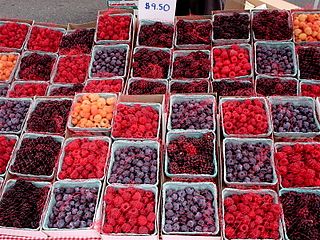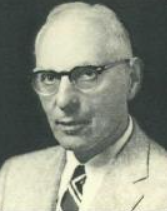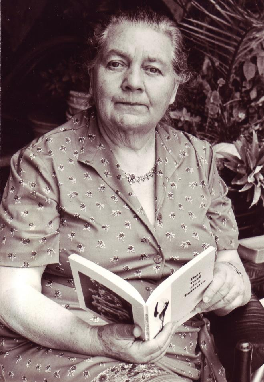
Amygdalin is a naturally occurring chemical compound found in many plants, most notably in the seeds (kernels) of apricots, bitter almonds, apples, peaches, cherries and plums, and in the roots of manioc.

A grape is a fruit, botanically a berry, of the deciduous woody vines of the flowering plant genus Vitis. Grapes are a non-climacteric type of fruit, generally occurring in clusters.
A macrobiotic diet is a fad diet based on ideas about types of food drawn from Zen Buddhism. The diet tries to balance the supposed yin and yang elements of food and cookware. Major principles of macrobiotic diets are to reduce animal products, eat locally grown foods that are in season, and consume meals in moderation.

Quackery, often synonymous with health fraud, is the promotion of fraudulent or ignorant medical practices. A quack is a "fraudulent or ignorant pretender to medical skill" or "a person who pretends, professionally or publicly, to have skill, knowledge, qualification or credentials they do not possess; a charlatan or snake oil salesman". The term quack is a clipped form of the archaic term quacksalver, from Dutch: kwakzalver a "hawker of salve". In the Middle Ages the term quack meant "shouting". The quacksalvers sold their wares at markets by shouting to gain attention.
Orthomolecular medicine is a form of alternative medicine that aims to maintain human health through nutritional supplementation. The concept builds on the idea of an optimal nutritional environment in the body and suggests that diseases reflect deficiencies in this environment. Treatment for disease, according to this view, involves attempts to correct "imbalances or deficiencies based on individual biochemistry" by use of substances such as vitamins, minerals, amino acids, trace elements and fatty acids. The notions behind orthomolecular medicine are not supported by sound medical evidence, and the therapy is not effective for chronic disease prevention; even the validity of calling the orthomolecular approach a form of medicine has been questioned since the 1970s.

Resveratrol (3,5,4′-trihydroxy-trans-stilbene) is a stilbenoid, a type of natural phenol, and a phytoalexin produced by several plants in response to injury or when the plant is under attack by pathogens, such as bacteria or fungi. Sources of resveratrol in food include the skin of grapes, blueberries, raspberries, mulberries, and peanuts.

The Mediterranean diet is a diet inspired by the eating habits and traditional food typical of southern Spain, southern Italy, and Crete, and formulated in the early 1960s. It is distinct from Mediterranean cuisine, which covers the actual cuisines of the Mediterranean countries, and from the Atlantic diet of northwestern Spain and Portugal. While inspired by a specific time and place, the "Mediterranean diet" was later refined based on the results of multiple scientific studies.

Phytochemicals are chemical compounds produced by plants, generally to help them resist fungi, bacteria and plant virus infections, and also consumption by insects and other animals. The name comes from Greek φυτόν (phyton) 'plant'. Some phytochemicals have been used as poisons and others as traditional medicine.

Chromotherapy, sometimes called color therapy, colorology or cromatherapy, is an alternative medicine that is considered pseudoscience and quackery. Chromotherapists claim to be able to use light in the form of color to balance "energy" lacking from a person's body, whether it be on physical, emotional, spiritual, or mental levels. For example, they thought that shining a colored light on a person would cure constipation. Historically chromotherapy has been associated with mysticism and occultism.

Max Gerson was a German-born American physician who developed the Gerson Therapy, a dietary-based alternative cancer treatment that he claimed could cure cancer and most chronic, degenerative diseases.

Johanna Budwig was a German biochemist, alternative cancer treatment advocate and writer. Budwig was a pharmacist and held doctorate degrees in physics and chemistry. Based on her research on fatty acids she developed a lacto-vegetarian diet that she believed was useful in the treatment of cancer. There is no clinical evidence that the Budwig diet is effective, and it may cause adverse effects.
Nutritional genomics, also known as nutrigenomics, is a science studying the relationship between human genome, human nutrition and health. People in the field work toward developing an understanding of how the whole body responds to a food via systems biology, as well as single gene/single food compound relationships. Nutritional genomics or Nutrigenomics is the relation between food and inherited genes, it was first expressed in 2001.

The health effects of wine are mainly determined by its active ingredient – alcohol. Preliminary studies found that drinking small quantities of wine, particularly of red wine, may be associated with a decreased risk of cardiovascular diseases, cognitive decline, stroke, diabetes mellitus, metabolic syndrome, and early death. Other studies found no such effects.
Megavitamin therapy is the use of large doses of vitamins, often many times greater than the recommended dietary allowance (RDA) in the attempt to prevent or treat diseases. Megavitamin therapy is typically used in alternative medicine by practitioners who call their approach orthomolecular medicine. Vitamins are useful in preventing and treating illnesses specifically associated with dietary vitamin shortfalls, but the conclusions of medical research are that the broad claims of disease treatment by advocates of megavitamin therapy are unsubstantiated by the available evidence. It is generally accepted that doses of any vitamin greatly in excess of nutritional requirements will result either in toxicity or in the excess simply being metabolised; thus evidence in favour of vitamin supplementation supports only doses in the normal range. Critics have described some aspects of orthomolecular medicine as food faddism or even quackery. Research on nutrient supplementation in general suggests that some nutritional supplements might be beneficial, and that others might be harmful; several specific nutritional therapies are associated with an increased likelihood of the condition they are meant to prevent.
Hoxsey Therapy or Hoxsey Method is an alternative medical treatment promoted as a cure for cancer. The treatment consists of a caustic herbal paste for external cancers or a herbal mixture for "internal" cancers, combined with laxatives, douches, vitamin supplements, and dietary changes. Reviews by major medical bodies, including the U.S. Food and Drug Administration (FDA), the National Cancer Institute, the American Cancer Society, M. D. Anderson Cancer Center, and Memorial Sloan-Kettering Cancer Center, have found no evidence that Hoxsey Therapy is an effective treatment for cancer. The sale or marketing of the Hoxsey Method was banned in the United States by the FDA on September 21, 1960 as a "worthless and discredited" remedy and a form of quackery.
Orthopathy or natural hygiene (NH) is a set of alternative medical beliefs and practices originating from the Nature Cure movement. Proponents claim that fasting, dieting, and other lifestyle measures are all that is necessary to prevent and treat disease.
A bioactive compound is a compound that has an effect on a living organism, tissue or cell, usually demonstrated by basic research in vitro or in vivo in the laboratory. While dietary nutrients are essential to life, bioactive compounds have not been proved to be essential – as the body can function without them – or because their actions are obscured by nutrients fulfilling the function.
The Immune Power Diet is a pseudoscientific elimination diet promoted by physician Stuart M. Berger (1953–1993). The diet was based on the false idea that many people have hidden food allergies and that by eliminating certain foods and taking dietary supplements the body's immune system would be strengthened.
Nutritional immunology is a field of immunology that focuses on studying the influence of nutrition on the immune system and its protective functions. Indeed, every organism will under nutrient-poor conditions "fight" for the precious micronutrients and conceal them from invading pathogens. As such, bacteria, fungi, plants secrete for example iron chelators (siderophores) to acquire iron from their surrounding










